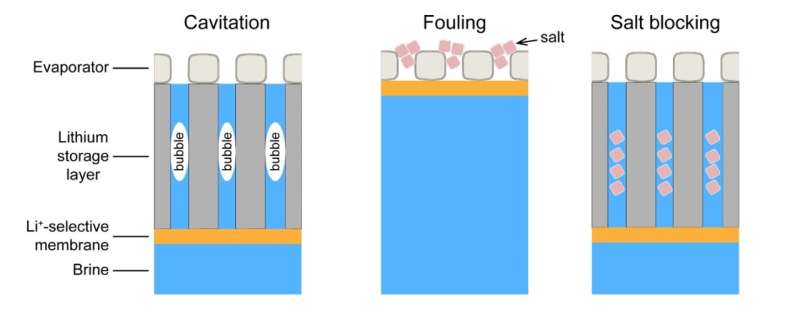
A team of engineers at Nanjing University, working with a pair of colleagues from the University of California, Berkeley, has developed a new way to extract lithium from briny water.
In their paper published in the journal Science, the team describes the process they developed and the device they built and how it could be used to extract lithium from various natural sources. Seth Darling, with Argonne National Laboratory in the U.S., has published a Perspective piece in the same journal issue outlining the work done by the team on this new effort.
Lithium is in high demand due to its use in batteries. Unfortunately, its traditional sources, hard rock ores, are expected to decline in the coming years. Because of that, scientists have been looking for other sources like briny water found in the world’s oceans. Prior research has suggested there is more than enough to meet global demand for as long as needed.
The problem is extracting the lithium in a way that does not pollute the environment and is relatively inexpensive to obtain. In this new effort, the research team has developed an approach called solar transpiration-powered lithium extraction and storage (STLES).
The idea behind the new approach involves using sunlight to extract lithium from brine. It calls for creating a device that floats on the brine’s surface. Inside the device is a membrane made of aluminum oxide with embedded nanoparticles.
When the sun shines on the devices, pressure builds up that forces lithium through the membrane, separating the ions from the brine—a silica ceramic frit with tiny holes in it that stores the lithium salts as they are pulled out. The researchers note that because the system operates passively, it is very inexpensive. They also note that it can be used in places besides the ocean, such as the Dead Sea.
The new approach is not the only one being investigated. Another team at the King Abdullah University of Science and Technology has developed a technique that involves using iron-phosphate electrodes and silver/silver halide redox electrodes to pull lithium ions from brine solution, which is then released into a freshwater compartment. They have also published a paper describing their technique in the journal Science.